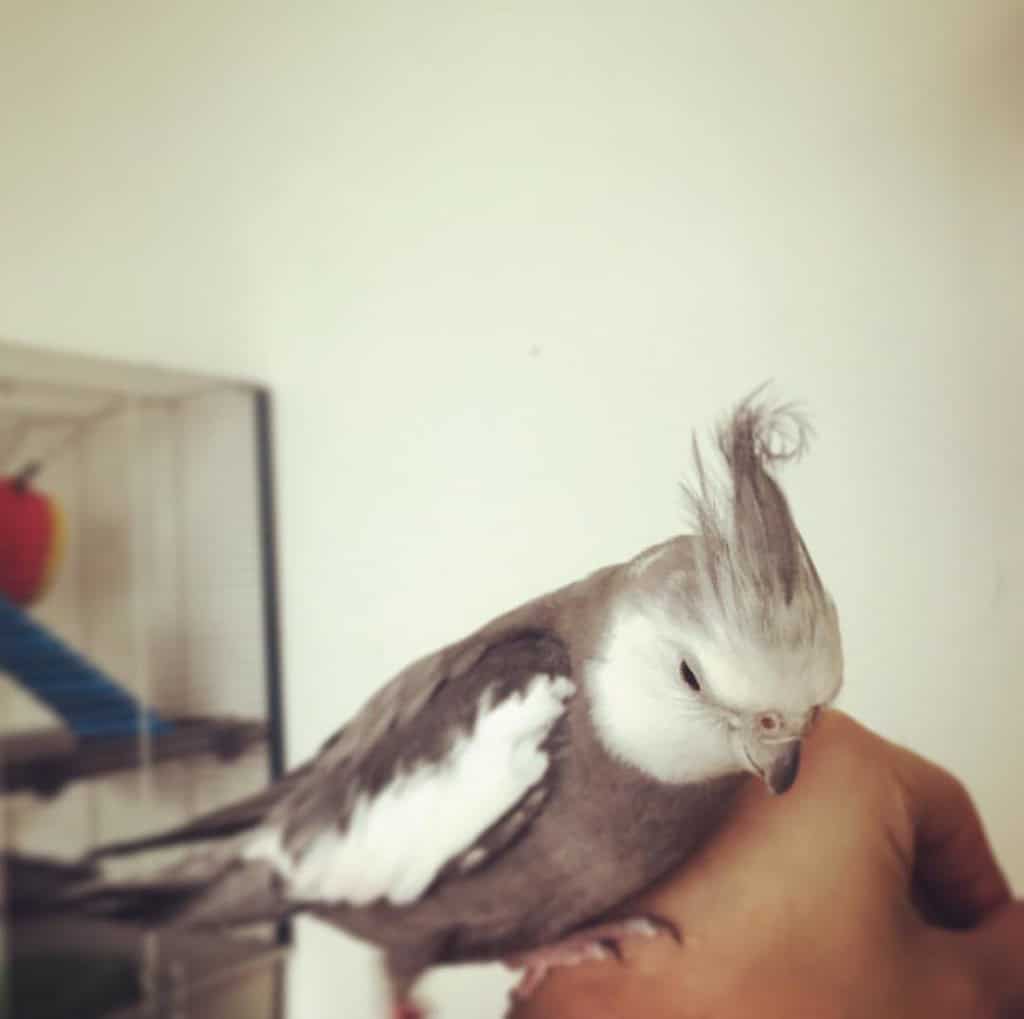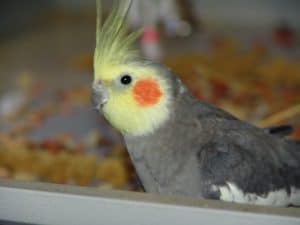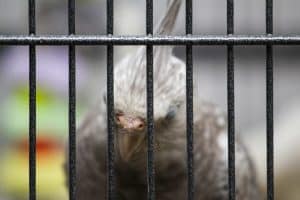Ever wondered what the world looks like from your cockatiel’s perspective? Understanding what is your cockatiel’s senses can deepen your connection with your feathered friend and enhance their well-being. Cockatiels, like many birds, are equipped with highly developed senses that are crucial for their survival in the wild and affect their behavior in captivity.
From their sharp eyesight to their acute hearing, each sense plays a pivotal role in how they interact with the environment. Exploring these sensory capabilities not only fascinates but also equips you with the knowledge to create a stimulating and safe environment for your pet. Let’s dive into the fascinating sensory world of cockatiels and discover how they perceive their surroundings.
Understanding Cockatiel Senses

Exploring the sensory capabilities of cockatiels offers insights into their behavior and needs. Each sense plays a critical role in how these intelligent birds interact with their environment and their human companions.
Vision: How Cockatiels See the World
Cockatiels possess highly adept vision, crucial for their survival. They have a wide field of view, allowing them to see over 300 degrees around them. This panoramic vision helps spot predators and find food sources effectively. Additionally, cockatiels can see ultraviolet light, enhancing their ability to distinguish between various colors and textures in their environment, which is not visible to the human eye.
Hearing: The Acoustic Capabilities of Cockatiels
The hearing ability of cockatiels is finely tuned to detect even the slightest sounds, providing them with essential survival skills in the wild. These birds can perceive a range of frequencies, enabling them to respond to different calls and sounds from their flock. This acute sense of hearing is vital for communication, especially in noisy environments where sound plays a key role in maintaining social connections within the species.
Taste: What Flavors Do Cockatiels Prefer?
While cockatiels do not have as many taste buds as humans, their sense of taste is sufficiently developed to discern a variety of flavors. They show a preference for certain foods such as seeds—particularly sunflower seeds—and fresh fruits. Intriguingly, cockatiels are also known to enjoy spicy foods like hot peppers, which do not affect them in the same way as humans, due to their inability to taste capsaicin, the active component that makes food spicy.
Touch: Sensitivity and Tactile Responses
The sense of touch is vital for cockatiels, particularly through their feet and beaks. These areas are highly sensitive and help them evaluate the texture and shape of objects. Tactile interactions also play a significant role in bonding and social interactions among cockatiels, including grooming and feeding behaviors, where touch helps to strengthen social bonds with both other birds and their human caretakers.
Smell: Do Cockatiels Use Their Sense of Smell?
Unlike many other bird species, cockatiels have a less developed sense of smell. This limitation means smell does not play a prominent role in their daily activities or survival strategies. Instead, cockatiels rely more heavily on their vision and hearing to interact with their surroundings and identify bird food sources, making these senses more critical to their overall perception of the world.
Behavioral Insights Linked to Sensory Input

Understanding the sensory capabilities of your cockatiel offers valuable insights into their behaviors and needs. By exploring how their senses directly influence their interactions and responses, you can foster a more enriching environment that promotes their well-being.
How Vision Influences Cockatiel Behavior
Cockatiels possess a remarkable field of vision, extending over 300 degrees, which allows them to see objects from various angles without needing to move their heads. This panoramic view helps them quickly notice predators or changes in their surroundings, increasing their chances of survival both in the wild and in captivity.
Additionally, their ability to perceive ultraviolet light enhances their visual acuity, playing a crucial role in social interactions by helping them identify mates or discern the health and mood of other birds through subtle changes in feather coloration.
The Role of Hearing in Communication
The acute hearing of cockatiels enables them to detect even subtle sounds, which is essential for communication within their flock. This heightened sense of hearing helps them recognize distinct calls from their mates or chicks, facilitating strong social bonds and coordination among the group. In a domestic setting, they’ll often respond to human voices and sounds, indicating their ability to adapt their communication skills from the wild to interacting with humans, enhancing their bond with their owners.
Taste Preferences and Diet Choices
Cockatiels show distinct preferences for certain types of foods, which can be attributed to their sense of taste. They are particularly fond of seeds, such as sunflower seeds, but incorporating a variety of foods like vegetables and even spicy items like hot peppers can cater to their palates and contribute to a balanced diet. Understanding and catering to these preferences helps ensure that they receive adequate nutrition, which is vital for their health and contentment.
The Importance of Touch for Bonding
Touch is a significant sensory channel for cockatiels, especially through their feet and beaks, which are highly sensitive. This sense allows them to explore their environment, recognize objects, and interact with fellow birds and humans. Gentle handling and petting can strengthen the bond between you and your cockatiel, as they often enjoy the warmth and comfort of human touch. Regular, affectionate interactions through touch reassure your pet of their safety and your affection, playing a critical role in their emotional and physical well-being.
The Role of Sensory Perception in Cockatiel Health and Well-Being

For bird enthusiasts, understanding the sensory world of cockatiels goes beyond mere fascination; it directly impacts their health and well-being. Cockatiels, being social birds, rely heavily on their senses to navigate their environment and maintain their health. Here’s how their sensory capabilities influence their overall well-being and what you can do to support their needs.
Vision and Its Impact on Health
Cockatiels’ exceptional vision plays a crucial role in their health. Their ability to see ultraviolet light allows them to detect subtle changes in their environment, such as variations in the coloration of their food or potential threats. For a feathery friend in captivity, providing a variety of colorful toys and perches can stimulate their visual senses and prevent boredom. Additionally, ensuring their living space is well-lit and free from potential hazards will help them feel secure and avoid accidents.
Hearing and Social Interaction
Social birds like cockatiels thrive on interaction and communication. Their acute hearing helps them stay connected with their flock, whether it’s in the wild or in a domestic setting. In a home environment, engaging in regular vocal interactions with your cockatiel and providing a stimulating auditory environment can help maintain their social needs. For instance, playing soft background music or mimicking bird calls can make them feel more at ease and reduce feelings of loneliness.
Taste and Dietary Health
A cockatiel’s sense of taste not only influences their food preferences but also their dietary health. Understanding their taste preferences can help you provide a balanced diet that supports their well-being. Since cockatiels have specific likes and dislikes, offering a variety of fresh fruits, vegetables, and seeds can keep them nutritionally satisfied. Being mindful of their dietary needs can prevent health issues related to poor nutrition, such as obesity or malnutrition.
Touch and Emotional Health
Touch is a vital sense for cockatiels, especially in forming bonds and reducing stress. Regular, gentle handling and interaction can help reinforce your relationship with your cockatiel, making them feel loved and secure. This tactile interaction can be particularly beneficial in preventing stress-related health issues, such as feather plucking or anxiety. Ensuring your cockatiel has opportunities for physical affection and interaction will support their emotional well-being.
Addressing Potential Health Issues
Being aware of your cockatiel’s sensory needs can also help in identifying potential health issues early. For instance, changes in their behavior or sensitivity to light, sound, or touch may indicate underlying health problems. Regular check-ups with an avian vet can help monitor their overall health and address any concerns that arise. Early detection of issues related to their senses can prevent more severe conditions and ensure your cockatiel remains happy and healthy.
Incorporating these sensory insights into your care routine will not only enhance your cockatiel’s quality of life but also deepen the bond between you and your feathery friend. By understanding and catering to their sensory needs, you contribute significantly to their happiness and well-being. Whether you’re a seasoned bird enthusiast or a new cockatiel owner, appreciating the role of sensory perception in their daily lives is key to providing the best care possible.
Final Thoughts: What is Your Cockatiel’s Senses?
Understanding your cockatiel’s senses is vital for fostering a strong and nurturing relationship. Recognizing how their sharp vision, acute hearing, and sensitivity to touch impact their daily interactions helps you create a supportive environment. By catering to their sensory needs—whether it’s through diet choices that appeal to their taste preferences or social interactions that engage their keen hearing and sight—you enhance their quality of life. Embrace these insights to ensure your feathered friend thrives in your care.
Other suggested articles:




